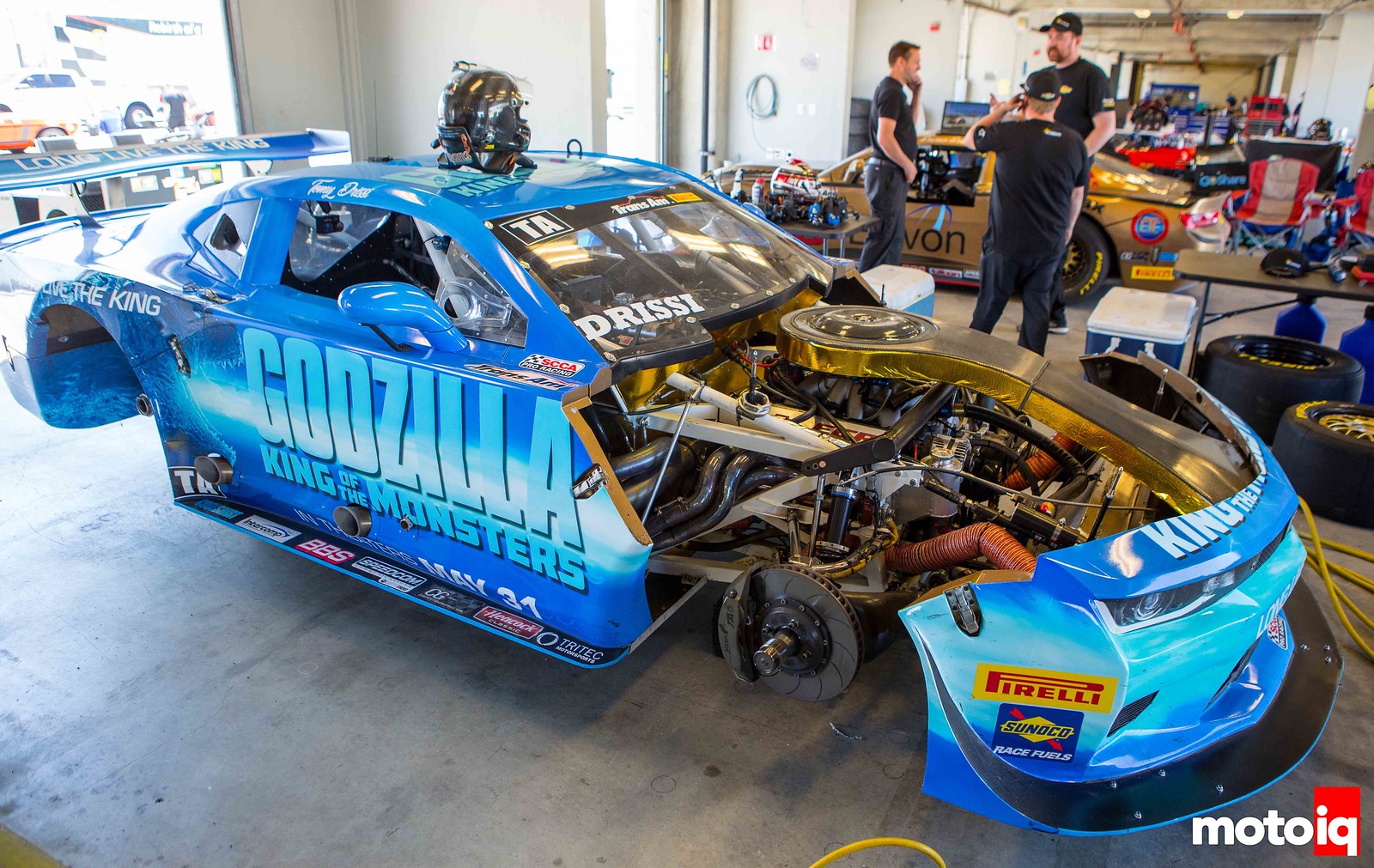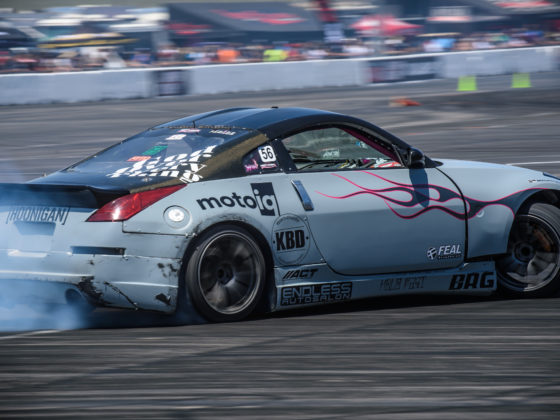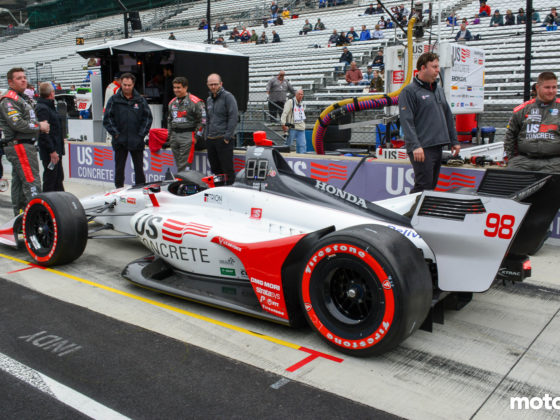
You can see how low in the chassis the engine can be mounted with the dry sump system.

The heat exchanger at the front of the car is for the coolant and the second one (the one you can see with PWR and C&R on it) is for the oil. I think that’s a massive inline oil filter mounted down low with an oil pressure sensor also installed. Large radius 90-degree fittings are used to minimize pressure drop. Gold foil on the bottom of the airbox is used to reduce the radiant heat transfer of the hot heat exchangers from warming up the air going into the engine.

The headers are long tube tri-Y design. It is definitely a tight fit between the frame rails.

The driver side header snakes around the back side of the engine. Hence all the gold foil on the firewall to reflect the heat. Look at the upper frame rail and you’ll notice a notch in them. That notch is from the historical design of the frame when a larger engine was fitted and the notch was required for clearance. The notch isn’t required for the current generation of engines, but I guess the frame builders didn’t get the memo.

Solid electrical signal connections are required through the bulkhead to ensure reliability.

The passenger side headers snake tightly around the frame rails.




14 comments
Fun fact – the Ave Riley chassis Burtin is running is derived from the Riley GT3-R Vipers from a few years back; that’s what the notch is for. I honestly wonder about the economics of making these things – I can imagine that it was less expensive to convert spare chassis from that to live axle than it would have been to make new ones, for example.
There’s no requirement to run centerlock wheels or anything, and most of the races are sprint races. The Pancho Weaver built Challenger that Boris Said was running last year was on 5-lug wheels, for example. I think that it may be just where a lot of teams have existing spare parts, plus it’s easier to design the uprights with good geometry for centerlock wheels.
If you know what you’re looking for there’s a lot of interesting details going on and things are a lot more sophisticated than they might seem. I love stuff like this – pure purpose built race car with no concessions to the original OEM compromises but brute simple enough that they can be maintained. Where else are you going to see road race cars that are at that power level but almost purely mechanical grip? Those rears are around 14″ wide. Hell, I know some of the teams are migrating to sequentials lately, but most are still running H-pattern transmissions!
Yup, the team owner mentioned the chassis was originally designed to fit a V10.
Hi Mr. Khiem Dinh. I’m just curious if you’re Vietnamese (noticing your familiar name). If yes, could you pls drop me your email address so we can contact in person? I’m from Vietnam, interested in automotive but still quite new to this area. Thanks in advance!
Have a question, are Trans Am cars relegated to carbs and distributors via that rule set?
The most recent rule book I can easily find is 2017; carburetors are required but ignitions are open as long as there’s an 8600RPM rev limit and no traction control. Rule book I found is here if you’re interested: http://gotransam.cdn.racersites.com/assets/2017%20Trans%20Am%20Series%20By%20Pirelli%20Rule%20Book%20v1%20(1-15-17)1.pdf
From following along and talking to people involved, current incarnation of Trans Am kind of started as something organized by the more serious SCCA GT-1 guys; the older ex-Cup 358s turned into the defacto standard for cost savings, and now are the actual standard. Even with it being a pro series again, I don’t think anyone really wants to start a spending war.
The downside to going fuel injection is likely having to go to a spec ECU to prevent cheating with traction and stability control. So they would have to follow the path of NASCAR I think.
am I the only one that wants to see one of these with something like an M5 V10 engine in it…? I know it wouldn’t be legal for the race series, but it’d make for a great track car 😀
I would like fuel injection and more aero!
SCCA is trying a club level “GTX” class, for FIA GT3 cars, SRO GT4 cars, World Challenge TCR, old Grand Am GT cars, and GT-1/TA stuff with EFI and a little more aero allowed. Chevy R07, Ford FR9, Dodge R6 and Toyota Phase 11 allowed with 90mm throttle body – I wonder if they’re sorta trialing things there before people lobby for them in the pro series.
I actually like the low level of aero. It makes the cars slide around more and maybe for better passing.
It’s really cool because none of the modern GT cars make pace the same way Trans Am does. Like, compare to the C7R IMSA/etc cars… lap times are pretty similar, weight is similar, but the Trans Am cars are up by 300-some hp.
Most of the cars are sequential 5 speed now (since 2017) The Xtrac used here is also used in a small number of stadium trucks and the narrower gear versions previously in WTCC and GT3 BMWs. Saenz, Hewland and a few others started catering to the new rules 5 spd sequential for 2017. I liked the H-Pattern rules and use an Ex Corvette GT1 Saenz in my car but even I want a sequential:) (and I have an Xtrac transaxle waiting patiently for me to design parts)
How do you like the Saenz? I’m looking into H-pattern options (their lower powered ones given what I’m using it for) in case my frankenstein close ratio synchro box idea doesn’t work.
http://kustomkomponents.com/ Found the maker of the driver cooling system… solid state air cooling; big bunch of heat sinks and peltiers plus fans. Interesting that those are out there now.